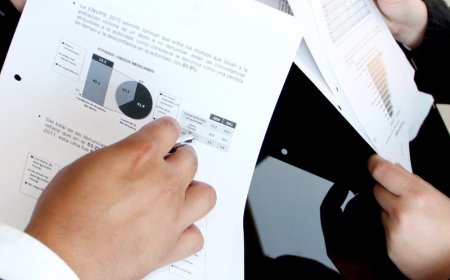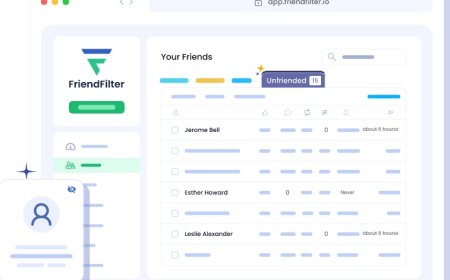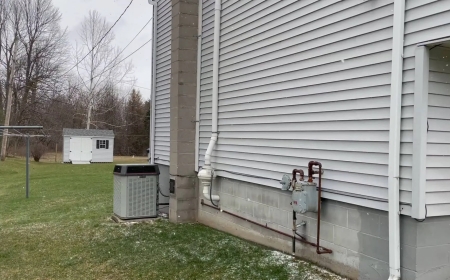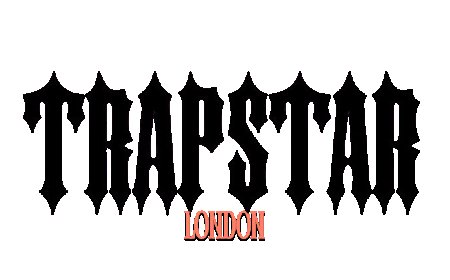How To Find Lebanese Kebabs Dallas Lunch
How to Find Lebanese Kebabs Dallas Lunch Finding authentic Lebanese kebabs for lunch in Dallas is more than just a meal search—it’s a cultural experience. Known for their smoky char, tender marinated meats, and aromatic spices, Lebanese kebabs represent centuries of culinary tradition refined in the Levant and brought to American soil by immigrant families and skilled chefs. Dallas, with its vibra
How to Find Lebanese Kebabs Dallas Lunch
Finding authentic Lebanese kebabs for lunch in Dallas is more than just a meal search—it’s a cultural experience. Known for their smoky char, tender marinated meats, and aromatic spices, Lebanese kebabs represent centuries of culinary tradition refined in the Levant and brought to American soil by immigrant families and skilled chefs. Dallas, with its vibrant Middle Eastern community and growing appreciation for global cuisines, offers a rich landscape of options for those seeking the perfect lunchtime kebab. But navigating this landscape requires more than a simple Google search. It demands an understanding of neighborhood dynamics, menu terminology, seasonal offerings, and the subtle signs of authenticity. This guide will walk you through exactly how to find the best Lebanese kebabs for lunch in Dallas, ensuring you don’t just eat—you savor.
Step-by-Step Guide
Step 1: Define What You’re Looking For
Before you begin searching, clarify your expectations. Lebanese kebabs come in multiple forms: kabab koobideh (ground lamb or beef), kabab shish (cubed marinated meat), kabab halla (lamb or chicken on flatbread), and shawarma (slow-roasted stacked meat, often sliced thin). While shawarma is sometimes grouped under kebabs, purists distinguish it as a separate preparation. For lunch, most diners prefer kabab shish or koobideh served with rice, grilled vegetables, and tahini or garlic sauce. Decide whether you want a plated meal, a wrap, or a combo with hummus and tabbouleh. This clarity will help you filter results when researching restaurants.
Step 2: Identify Dallas Neighborhoods With Strong Lebanese Communities
Dallas has several neighborhoods where Lebanese immigrants have established businesses for decades. Focus your search on areas like Little Syria (along Harry Hines Boulevard near the intersection with Skillman Street), North Dallas (particularly around the intersection of Northwest Highway and Belt Line Road), and Plano (especially along Park Boulevard and the Legacy area). These zones host family-run restaurants, halal butchers, and grocery stores that serve as reliable indicators of authentic cuisine. Avoid chain restaurants or generic “Middle Eastern” labels—look for names like “Al Nour,” “Bab Al Sham,” or “Lebanese House,” which often signal heritage ownership.
Step 3: Use Localized Search Terms
Generic searches like “Lebanese kebabs Dallas” yield broad results. Optimize your search by adding lunch-specific modifiers: “best Lebanese kebabs for lunch Dallas,” “authentic shish kebab near me lunch,” or “Lebanese restaurant open 11am–3pm Dallas.” Use Google’s local search filters to set your location precisely. Enable “Open Now” and “Lunch Hours” filters to eliminate places that close early or don’t serve lunch. Pay attention to the “Popular Times” graph—restaurants with consistent lunchtime crowds are more likely to offer fresh, high-quality food.
Step 4: Analyze Online Reviews for Authenticity Cues
Not all reviews are equal. Look for patterns in language used by diners. Authentic reviews often mention: “The garlic sauce tasted like my grandmother’s,” “The meat was marinated for 24 hours,” or “They serve fresh pita baked in-house.” Avoid places where reviews only mention “fast service” or “good value” without describing flavor profiles. Check reviews from the past 30–60 days—older reviews may reflect outdated menus or staff. Pay special attention to comments about lunch specials, portion sizes, and whether the kebabs are grilled to order or pre-cooked.
Step 5: Examine Menus for Specific Ingredients and Techniques
Authentic Lebanese kitchens use specific spices: sumac, allspice, cinnamon, and cardamom—not generic “Middle Eastern seasoning.” Look for kebabs labeled as “hand-ground lamb,” “marinated overnight,” or “charcoal-grilled.” Avoid menus that list “beef kebab” without specifying the cut or origin. Reputable restaurants will also list side dishes in Arabic or French, such as “fattoush,” “mujadara,” or “labneh.” If a menu has no Arabic script and uses only English names like “Spicy Grill Platter,” it’s likely a commercialized version. Cross-reference menu items with traditional Lebanese cuisine guides to verify accuracy.
Step 6: Call Ahead to Confirm Lunch Service and Customization
Many Lebanese restaurants in Dallas are family-run and may not have updated online menus or hours. Call during business hours (10 a.m.–1 p.m.) and ask: “Do you grill kebabs fresh for lunch orders?” or “Can I request extra garlic sauce and grilled onions?” A knowledgeable staff member will answer with specifics about preparation, cooking times, and available meats. If the person on the phone sounds confused or gives a generic response, it may indicate a less authentic operation. Ask if they source meat from local halal butchers—this is a strong indicator of commitment to quality.
Step 7: Visit During Peak Lunch Hours to Observe Operations
Once you’ve narrowed your options to two or three restaurants, visit during lunch rush (12 p.m.–1:30 p.m.). Observe the kitchen: Is there visible grilling over open flame? Are staff handling meat with gloves and separating raw from cooked? Is there a steady flow of regular customers, especially Middle Eastern families? Authentic spots often have a small counter where customers order directly from the cook. Avoid places where food is pre-cooked and kept under heat lamps—this dries out the meat and dulls the spices. A real Lebanese kitchen will smell of charred meat, cumin, and fresh herbs—not grease or reheated oil.
Step 8: Order the Right Combination
For a true lunch experience, order a kebab platter with two types of meat (e.g., chicken shish and lamb koobideh), a side of rice pilaf with toasted almonds, grilled tomatoes and onions, a dollop of tahini sauce, and a small bowl of tabbouleh. Ask for fresh pita bread—warm, soft, and slightly charred. Skip the fries or nachos; these are not traditional. If the restaurant offers ayran (a yogurt drink) or laban, order it—it’s the perfect palate cleanser. This combination ensures you experience the full spectrum of flavors that define Lebanese lunch culture.
Step 9: Note the Presentation and Ambiance
Authentic Lebanese restaurants often feature simple, warm interiors with wooden tables, Arabic calligraphy, and sometimes a small shelf of spices visible behind the counter. The food is presented on ceramic plates, not styrofoam trays. The kebabs should be served with the skewers intact, not removed unless requested. The rice should be fluffy, not sticky, and the vegetables should show signs of being grilled fresh that day. If the presentation feels rushed or generic, it’s a red flag. The ambiance should feel like a family dining room, not a fast-casual chain.
Step 10: Return and Build a Personal Shortlist
After trying several places, return to your top two or three. Order the same meal on different days to test consistency. Note which restaurant keeps the meat juicy, which sauce has the right balance of lemon and garlic, and which one offers the most generous portions. Over time, you’ll develop a personal shortlist based on taste, reliability, and service. Many regulars in Dallas have favorite spots they return to weekly—become one of them. Loyalty often leads to personalized service: the cook may start adding extra herbs or offering a free dessert.
Best Practices
Practice 1: Prioritize Freshness Over Convenience
The hallmark of great Lebanese kebabs is freshness. Meat should be ground or cut当日, marinated for at least 12 hours, and grilled to order. Avoid restaurants that advertise “fast lunch service” as their main selling point. Speed often compromises quality. The best kebabs take time—15 to 20 minutes from order to plate. If a place promises delivery in under 10 minutes, the meat is likely pre-cooked. Patience is part of the ritual.
Practice 2: Learn Key Arabic Terms
Understanding basic Arabic food terms helps you communicate your preferences and spot authenticity. Kebab means grilled meat on skewers. Shish means cubes. Koobideh means ground. Shawarma means rotated meat. Tahini is sesame paste. Za’atar is a herb blend. Knowing these terms allows you to ask for exactly what you want and recognize when a menu is misusing terminology. For example, “chicken shawarma kebab” is redundant—shawarma is already a form of kebab.
Practice 3: Avoid Chains and Franchises
While national chains like “Shawarma Shack” or “Middle East Grill” may be convenient, they rarely offer authentic flavors. These restaurants standardize recipes for mass production, often using pre-marinated frozen meats and generic sauces. Stick to independently owned establishments. Look for names that include the owner’s surname, such as “Ali’s Kebab House” or “The Hamdan Family Restaurant.” These places are more likely to preserve traditional methods passed down through generations.
Practice 4: Visit During Off-Peak Days for Better Service
While lunch rush indicates popularity, visiting on a Tuesday or Wednesday afternoon can yield a more personalized experience. Staff are less overwhelmed, and you’re more likely to speak directly with the chef or owner. Ask questions about their origin in Lebanon, what part of the country they’re from, and how they learned to cook. Many chefs are proud to share their heritage—and will often customize your meal based on your preferences.
Practice 5: Support Women-Owned Businesses
Many of Dallas’s most authentic Lebanese kitchens are run by women who learned recipes from their mothers and grandmothers. Look for restaurants with names like “Mama’s Kitchen,” “Layla’s Table,” or “Sahar’s Grill.” These spots often feature homemade sauces, hand-rolled kibbeh, and traditional desserts like baklava made with rosewater. Supporting these businesses preserves cultural heritage and ensures you’re eating food made with generations of care.
Practice 6: Bring Your Own Condiments (If Needed)
Some traditionalists bring their own sumac or hot pepper paste to enhance their meal. While not necessary, if you’ve found a restaurant you love but feel the sauces are too mild, politely ask if you can add your own. Many owners welcome this as a sign of appreciation. Keep a small bottle of authentic Lebanese sumac in your bag—it’s a subtle way to elevate any kebab.
Practice 7: Respect the Culture
Lebanese dining is communal and unhurried. Don’t rush your meal. Use your right hand to eat if you’re enjoying the food with bread—this is traditional. Compliment the chef. Say “Shukran” (thank you) in Arabic. These small gestures build rapport and often lead to unexpected perks: a free dessert, extra meat, or an invitation to try a family recipe.
Tools and Resources
Tool 1: Google Maps with Custom Filters
Use Google Maps to search “Lebanese restaurants Dallas” and apply filters: “Lunch,” “Open Now,” “Highly Rated,” and “Has Photos.” Click on each result to view customer-submitted photos of food—real images of kebabs on skewers, not stock photos. Look for photos showing char marks on meat, fresh herbs, and homemade sauces. Avoid places with only pictures of empty tables or logos.
Tool 2: Yelp Advanced Search
On Yelp, use the “Cuisine” filter to select “Lebanese” and then sort by “Top Rated.” Scroll through reviews using the “Most Recent” filter. Use the keyword search within reviews: type “kebab,” “garlic sauce,” or “charcoal grill.” Yelp’s “Photos” tab is invaluable—real diners often upload close-ups of the meat, rice, and sides, giving you a clear idea of quality.
Tool 3: Instagram Hashtags
Search Instagram for hashtags like
LebaneseKebabsDallas, #DallasMiddleEasternFood, #KebabLunchDallas, or #LebaneseInTexas. Follow local food bloggers who document authentic eats. Many restaurants post daily specials, cooking videos, or behind-the-scenes prep—this reveals their process. Look for posts tagged with location pins in North Dallas or Plano. Reels showing meat being skewered or grilled over flame are strong indicators of authenticity.
Tool 4: Facebook Groups
Join local groups like “Dallas Foodies,” “Middle Eastern Food Lovers Texas,” or “Lebanese in Dallas.” Ask for recommendations: “Looking for the best lunchtime Lebanese kebabs—any spots with charcoal grills and fresh garlic sauce?” Members often reply with personal stories, photos, and even directions. These groups are more trustworthy than generic review sites because they’re community-driven.
Tool 5: Halal Food Directories
Visit websites like HalalTrip.com or FindHalal.com and search for Dallas. These directories list restaurants verified by Muslim communities, ensuring halal meat and proper preparation. Many Lebanese restaurants in Dallas are halal-certified, and these sites often include reviews from people who prioritize religious dietary standards—a sign of cultural authenticity.
Tool 6: Local Food Tours
Consider booking a guided food tour in Dallas that includes Middle Eastern cuisine. Companies like “Taste of Dallas” or “Culinary Crossroads” offer walking tours through Little Syria and North Dallas. These tours are led by cultural insiders who explain the history behind each dish and introduce you to hidden gems you’d never find alone.
Tool 7: Lebanese Grocery Stores
Visit stores like Al Wadi Market (North Dallas), Lebanese Grocery & Deli (Plano), or Sham’s Market (Irving). These stores often have small in-house eateries or bulletin boards with handwritten recommendations for local restaurants. Staff are usually Lebanese immigrants who will point you to the best lunch spots. Buy a bottle of za’atar or olive oil while you’re there—it’s a souvenir and a flavor booster.
Real Examples
Example 1: Al Nour Lebanese Restaurant – North Dallas
Located at 10301 N. Central Expressway, Al Nour has been serving Dallas since 1998. Their lunch menu features a “Kebab Combo” with lamb and chicken shish, grilled vegetables, rice pilaf, and house-made tahini. The owner, Samir Haddad, immigrated from Tripoli and grills over charcoal daily. Customers consistently mention the “perfect char” on the meat and the “real garlic sauce” that’s not too thick. The restaurant is open Monday–Saturday, 11 a.m.–4 p.m., and often has a line of regulars by noon. A recent Instagram post showed the owner hand-mixing the marinade at 6 a.m.—a sign of dedication.
Example 2: Bab Al Sham – Little Syria
At 4210 Harry Hines Blvd, Bab Al Sham is a family-run spot with no sign—just a small awning and a chalkboard menu. Their specialty is “Koobideh Kebab” made with 80/20 lamb, marinated with sumac and mint. Lunch is served from 11:30 a.m. to 2:30 p.m., and the kitchen closes after that. Regulars know to arrive before 12:15 p.m. to avoid missing the last batch. The owner, Leila Karam, bakes pita in a clay oven every morning. Reviews on Yelp highlight the “smoky flavor you can’t replicate with gas.” This is the kind of place where you’re offered a free glass of lemonade with your meal.
Example 3: The Lebanese House – Plano
At 3400 Park Blvd, The Lebanese House offers a “Lunch Special” for $12.99: choice of kebab, hummus, tabbouleh, and pita. Their chicken shish is marinated in yogurt and lemon for 18 hours. The restaurant has a small courtyard with Arabic music playing softly. The chef, Farid El-Haddad, trained in Beirut and insists on using imported Lebanese olive oil. A food blogger from “Dallas Eats Daily” featured them in a 2023 video, noting the “unmistakable scent of cumin” as you walk in. The lunch crowd is diverse—students, professionals, and Lebanese expats all sit side by side.
Example 4: Mama’s Kitchen – Irving
Run by Fatima Al-Masri, this unassuming spot on South Belt Line Road serves only lunch on weekdays. Her “Mixed Kebab Platter” includes lamb, beef, and chicken, each marinated differently. The rice is cooked with saffron and pine nuts. Fatima learned the recipes from her mother in Baalbek. She doesn’t have a website, but locals know her by word of mouth. The only way to find her is by asking at Sham’s Market down the street. Her kebabs are often described as “the taste of home” by Lebanese expats who’ve traveled across the country to eat here.
Example 5: Kebab & Co – Richardson
Founded by brothers from Tripoli, Kebab & Co offers a “Lunch Box” with two kebabs, two sides, and a drink for $14. Their standout is the “Lamb Koobideh with Extra Sumac.” They use a traditional wooden skewer and grill over mesquite. The restaurant has a mural of Mount Lebanon on the wall and plays classic Fairuz songs. Customers frequently mention the “perfect texture” of the meat—juicy inside, crisp outside. The brothers still hand-cut each piece of meat daily. This is the kind of place where you leave not just full, but connected.
FAQs
What’s the best time to go for Lebanese kebabs in Dallas for lunch?
The ideal time is between 11:30 a.m. and 12:30 p.m. This ensures the kebabs are freshly grilled and the restaurant isn’t overwhelmed. Arriving after 1 p.m. risks running out of the best cuts, as many places sell out by early afternoon.
Can I order Lebanese kebabs for takeout?
Yes, but ask for the kebabs to be wrapped separately from the rice and sauces to prevent sogginess. Request fresh pita and extra sauce on the side. Some restaurants even offer insulated bags to keep the meat warm.
Are Lebanese kebabs in Dallas spicy?
Traditionally, they are not. The heat comes from optional hot sauce or chili flakes on the side. The flavor profile is more about aromatic spices like cumin, coriander, and cinnamon than chili heat.
What should I drink with Lebanese kebabs for lunch?
Traditional pairings include ayran (salted yogurt drink), laban (buttermilk), or mint tea. Avoid soda if you want to experience the full flavor—these drinks cleanse the palate and complement the richness of the meat.
Do Lebanese restaurants in Dallas offer vegetarian kebabs?
Yes, many offer grilled vegetable kebabs (bell peppers, zucchini, mushrooms, onions) marinated in olive oil, lemon, and herbs. Some also serve halloumi cheese skewers—a delicious alternative.
How much should I expect to pay for a lunch portion?
Authentic Lebanese kebabs for lunch typically range from $12 to $18. Higher prices may reflect premium cuts or organic ingredients. If you see a kebab lunch for under $10, ask how the meat is sourced—it may be low-quality or pre-cooked.
Is it common to tip at Lebanese restaurants in Dallas?
Yes, tipping is customary. A 15–20% tip is appreciated, especially if the staff goes out of their way to customize your meal or share stories about the food.
Can I find gluten-free Lebanese kebabs in Dallas?
Yes. The kebabs themselves are naturally gluten-free. Ask for rice instead of pita and confirm that sauces like tahini are made without additives. Many restaurants are happy to accommodate.
What’s the difference between shawarma and kebab?
Kebab refers to meat grilled on skewers, usually in chunks. Shawarma is meat stacked on a vertical rotisserie, slowly roasted and shaved off. Both are delicious, but they’re prepared differently and have distinct textures.
How can I tell if the garlic sauce is authentic?
Authentic garlic sauce (toum) is white, creamy, and intensely garlicky—made from crushed garlic, lemon juice, oil, and salt, whipped into an emulsion. It should not taste like mayonnaise or have a sour aftertaste. If it’s yellow or runny, it’s not authentic.
Conclusion
Finding the best Lebanese kebabs for lunch in Dallas isn’t about finding the closest restaurant—it’s about discovering a culinary tradition preserved through generations. It’s about the scent of charcoal smoke in the air, the crackle of meat hitting the grill, the quiet pride of a chef who learned to cook from their mother. The neighborhoods of North Dallas, Little Syria, and Plano hold the keys to this experience, but only if you know how to look. Use the tools, follow the practices, listen to the stories, and trust your senses. The right kebab will speak to you—not just with flavor, but with history. When you sit down to eat, you’re not just having lunch. You’re participating in a legacy. And in Dallas, that legacy is alive, thriving, and waiting for you to find it.




































